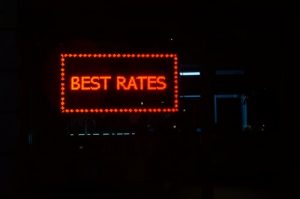Along with inflation, economic growth, and other elements, the Federal Reserve is one of the many influences on mortgage rates.
The Federal Reserve does not set mortgage rates but has an indirect impact on mortgage rates.
Mortgage rates are determined by many factors, including inflation, job creation rates, and economic growth or decline. Federal Reserve monetary policy is also a factor determined by the Federal Open Market Committee.
What the Federal Reserve does
The Federal Reserve is the country’s central bank. Leading the economy with the dual objective of promoting job growth and controlling inflation.
The FOMC pursues these monetary policy objectives: to manage the money supply and the costs of credit. The main monetary policy tool is the federal funds rate, the interest rate that banks charge each other for short-term loans. Although there are no “federal mortgage rates”, the federal rate affects interest rates on longer-term loans, including mortgages.
The FOMC meets eight times a year approximately every six weeks to change monetary policy. The federal rate does not change at most meetings. At the end of each meeting, the committee publishes a statement explaining its reasoning. Three minutes later, the minutes of the meeting were made public, giving the Fed nerds even more details.
Do Mortgage Rates Follow Fed Rates?
The Fed and the mortgage market act like dancing partners: sometimes the Fed leads, sometimes the mortgage market leads, and sometimes they dance alone.
The federal funds rate and mortgage rates generally move in the same direction. However, it is difficult to say whether mortgage rates will follow the action of the Fed or vice versa.
The FOMC prefers to inform investors when it intends to raise or lower short-term interest rates. Committee members announce their intentions by spraying clues into their public speeches. At the time of the committee meeting, there is generally a consensus among investors as to whether the Fed will cut, raise, or leave rates unchanged.
As this consensus grows before an FOMC meeting, mortgage rates tend to drift in the direction the Fed should move. At the time of the meeting, mortgage rates often already reflect the expected rate change.
At the same time, mortgage rates rise and fall daily in response to the ups and downs of the US economies. USA And overall, these are the same events to which the Fed responds. Sometimes the Fed and mortgage rates move in opposite directions.
What is the current federal rate?
In an emergency response to the COVID-19 pandemic, the FOMC reduced federal interest rates by a full percentage point on March 15, 2020. The key interest rate on federal funds was reduced from 0 % to 0.25%.
The coronavirus epidemic has damaged communities and disrupted economic activity in many countries, including the United States. Global financial conditions have also been significantly affected, “said the fee setting committee.
The central bank said it plans to keep the policy rate close to zero “until it is satisfied that the economy has survived recent events and is on track to meet its maximum targets and price stability. A rate cut was not the only move by the Federal Reserve. He announced a series of quantitative easing, a form of stimulus that the central bank used for six years after the 2008 economic crisis.
In the 2020 version of quantitative easing, the Fed will buy at least $500 billion in treasury bills and at least $200 billion in mortgage-backed securities. The goal is to add liquidity to the mortgage banking system to assure lenders that loans are secure, with the Fed ready to buy mortgage-backed securities.
The quantitative easing from 2008 to 2014 successfully led banks to lend to businesses and consumers. Another quantitative easing target (bringing the inflation rate to 2%) was only partially achieved. Higher inflation gives businesses and consumers a reason to spend rather than save. Spending stimulates the economy.



